Microsoft's 'you are the hub' Windows 10 strategy is about us and here is why it matters
"…No single device will be the hub of activity forever. The hub is you."
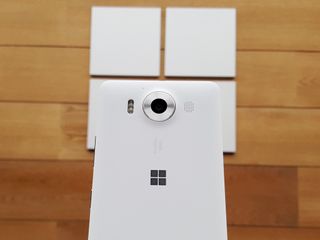
These were among the closing words from Microsoft's CEO Satya Nadella as he concluded Microsoft's highly anticipated, and in my estimation, successful #Windows10Devices event on October 6th, 2015.
Nadella's closing remarks summarized a dynamic event that seemed to resonate with the audience. Beginning with the Xbox and ending with the world's most powerful laptop, the new Surface Book, the event communicated one major theme. Though the day was a means to showcase devices it was the Universal Windows Platform took center stage. High-end first party hardware were simply the stage lights used to illuminate Microsoft's mobility play: their universal device agnostic platform.
The entire range of this family of devices runs on Microsoft's Universal Windows Platform (UWP). And of course, this platform has the users experience at its core.
I shared in, "Microsoft is positioned beyond the mobile curve," that the future of computing is "device-less" and the primary computing device is the cloud. Nadella's summation of the day's events seemed to validate those words. "…The hub is you."

Perfect 10
Terry Myerson opened the event with the staggering stat that in just ten weeks time 110 million devices are now running Windows 10. In less than three months there are more devices running Windows 10 than there are running Apple's OS X.
Microsoft's goal is to reach 1 billion devices running Windows 10 within 2-3 years. This initial pace toward that goal is reassuring. Particularly considering that Windows is a universal platform hosting a family of devices. As such, just as a human family with all the variations among its members shares common genes, the Microsoft family of devices share a common core.

This common core allows developers to target the entire UWP (Universal Windows Platform) with their apps. There are currently a limited number of universal apps available, but the demonstration of core apps like Office reveals the key claim of the platform. Namely the seamless transition of a user's experiences across devices or device states (in the case of Continuum).
Get the Windows Central Newsletter
All the latest news, reviews, and guides for Windows and Xbox diehards.
Windows 10 adoption has had derivative effects on Microsoft's ecosystem as well. According to Terry Myerson, in the three months since its release there have been 1.25 billion visits to the app store. That translates to a four-time increase in revenue for developers.
Money talks. This growth speaks volumes to the claim by Microsoft that their massive PC install base could be used to bolster the UWP. Now I don't know if it was these numbers or backroom negotiations that have influenced coming partnerships, but it is good to hear that certain popular mainstream apps will be going universal in Windows 10. Facebook's Instagram and Messenger along with Soda Saga and other apps will soon be experienced across users devices as Universal Windows apps.
The additional fact, per Myerson that users are spending more time in apps such as Netflix rather than the website is key to universal apps success. As these and other universal apps carry user's experiences across devices, Nadella's word's echo, "You are the hub."

Gaming
Though Xbox news wasn't at the top of the October 6th event wish list, gaming is core to the Windows experience. The continuity across Microsoft's gaming platform, which encompasses Windows and Xbox, deserves some attention.
PC gaming caters to a vast audience. Hardcore Xbox gamers are also a large demographic. Thus Microsoft, by way of its OS and console is devoted to gaming. Through Windows 10 Redmond has brought those two disparate mediums, console and PC, closer together.
The 120 years of gameplay streamed from the Xbox to Windows 10 devices in less than three months, per Myerson, is a powerful testimony of this universal platform. Windows 10's provisioning of a means to allow hardcore game experiences to follow users through their PC's, tablets, laptops and 2-in-1s to any room in the house has clearly resonated with gamers.
Gamers can play Xbox games, controller and all, from their PCs as if they were playing from the traditional position in front of the television. The device no longer matters. Microsoft is indeed proving that Windows 10 is a universal platform centered around the user's experiences. Gamers, "you are the hub."

Cortana
In the three months since Windows 10 arrived with Cortana in tow (for some regions), the personal assistant "has answered over 1 billion questions," Myerson shared. Users are talking to Cortana. With her cross platform moves to Android and iOS via the Windows 10 companion apps and her inherent position in Windows Phone she will follow users anywhere. With her handy 'Notebook' where everything she knows about users is stored, she will remember interests, appointments, favorite places and more regardless of the device she will assist users from. Cortana users, "You are the hub."

HoloLens
HoloLens is likely Microsoft's most ambitious product. The device seems like something out of science-fiction. The mixed-reality gaming demonstration where a wearable, form-shifting hologram transformed from a hand borne laser gauntlet to a shield simply reaffirmed that feeling. Yet HoloLens is real. As is Microsoft's virtual reality platform, Windows Holographic. Both present an opportunity for developers and OEM partners.
One point Microsoft was certain to stress is that HoloLens is a full, tetherless, wearable computer. Though the presentation focused on gaming, HoloLens has potentially profound applications in other areas as well. Science, healthcare, education, architecture and more can benefit from the connected mixed-reality environment HoloLens provides. The infinite malleability of a virtual environment is digital clay that can be molded by the creative imaginations of developers. The possibilities seem endless. After the release of the HoloLens Developer Kit in Q1 2016 for $3000, we will begin to see the vast imaginations of developers pushing creativity to the limits with the platform.
Additionally because HoloLens runs on Window 10, a user's experience will follow them to this device as well.
"In my case I have a Band. I have my phone. I have my Surface. I have my Surface Hub, and I'll have a HoloLens. And that ...is all Windows 10. And I'll seamlessly move between all of these. I want the notifications....data and apps to flow between all of these things."-Nadella
You are the hub.
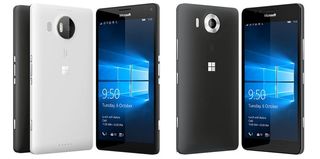
Productive like a boss
With an infectious, "I'm just being me" presentation style Bryan Roper{.nofollow} talked to us about how the 5.2" Lumia 950 and 5.7" 950 XL could make us more productive. Productive like a boss to be exact. Since these devices are packing 808 hexacore and 810 octacore chipsets respectively, keeping them cool with the liquid cooling system akin to that found in the Surface is important.
The specs on both these devices are comparable to what rivals have in the market. But as I shared in Highs and Lows Part V: Continuum, high-end specs is just the price of admission. They simply get Microsoft a seat at the table. Windows phones needed a differentiator and Continuum is it. Nadella described these devices as the most productive phones on the planet and asserted that they could be a user's only computing device.

Bryan demonstrated this point effectively. He gave the most practical and comprehensive demonstration of Continuum we've seen to date. With a simple connection to the Microsoft Display Dock (though wireless connection is supported), which connected the device to a larger screen, keyboard and mouse, the Lumia seamlessly transformed into a PC-like experience.
From the Start menu, multitasking, shortcut keys, taskbar, high-speed USB file transfer and more the experience was very much that of a familiar PC. Even an astute onlooker could have easily mistaken the UI on screen as the recently released Windows 10 OS.
Additionally, the ability to continue to use the phone as a phone and as an independent second screen fortifies the experience. This functionality is something similar tech like that found in the Motorola Atrix was not capable of doing.
Finally, the power of Universal apps allows apps to scale appropriately to fit any screen through Continuum. This capability places the Continuum enabled device in the "background" while pulling the users experience forward, allowing the user to work seamlessly without fussing over hardware. Lumia users, "You are the hub."
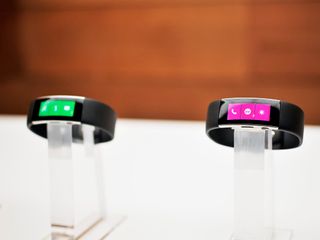
On the Bandwagon
Nadella described the Microsoft Band as a platform of sensors and a cloud service. This description conveys how the Band fits within Microsoft's ecosystem. It's not just hardware. By contrast, Apple's positioning of the Apple Watch is laser-focused on its physical design as seen in an early 12-page spread in Vogue. The Band, however, embodies the vast scope of Microsoft's Health platform.
As I wrote in the past, the potential licensing of the now 11 sensors to new and old partner OEMs allows Microsoft technology to permeate the industry. Microsoft can effectively become the platform that empowers partner OEM wearable devices. Additionally the cross-platform compatibility of the Band and Microsoft's Health platform allows users to monitor and track their health from any ecosystem and across any device. You are the hub.
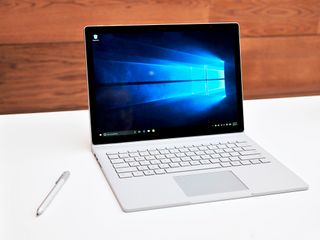
Surface, nurture the rhythm
As the tablet that can replace your laptop, the Surface line began Microsoft's introduction of hybrid devices that conform to a user's needs. The event appropriately ended with that line of devices. The new Surface Pro 4, among other things, has a better display, keyboard, pen and is faster than its predecessor. Panos Panay asserted that it is the tablet that will replace your laptop.
Microsoft then introduced what they've dubbed the ultimate laptop, their new Surface Book. Panay shared that this laptop is the thinnest most powerful PC ever built. He then played a clip where the screen of this laptop was removed from the base. To the surprise and delight of onlookers, the Surface Book was also a tablet. Nadella later referred to this device as a clipboard that becomes a laptop. The ability for the world's most powerful laptop to become the world's most powerful tablet provides great opportunities for versatility for power users. A user need not switch devices to accomplish various tasks. The device transitions with the need. Surface users, "You are the hub."
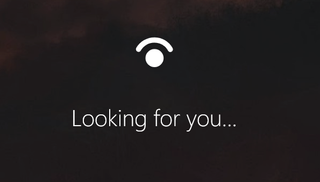
You
As devices come and go, you persist...What matters most is the mobility of experiences not the mobility of a single device.–Nadella
Without question, the simplest quantifiable number is one. When complex issues are simplified by reducing the number of variables any challenge is usually more easily managed. Ironically Apple has recently increased its number of Operating Systems with the addition of tvOS to iOS, OS X, and watchOS. Google is struggling with Android and Chrome.
Microsoft committed to creating one core for a family of devices. A single OS for developers to target and for user's computing experiences to exist within. This transition met with hiccups as some Windows Phone 7 users were left hanging at Windows Phone 7.8. Microsoft was mocked as they made UI missteps with Window 8/8.1.
Through corporate restructuring with the "One Microsoft" theme underpinning their efforts, Microsoft ultimately succeeded in simplifying a complex issue. They have pioneered a single OS vision across all devices. A Universal Windows Platform with the users experiences at its core.
Windows 10 is about us, the users. It succeeds like no other platform with providing truly personal computing. It is an evolving service. Nadella's cloud-first, mobile-first ambition reduces the sea of devices to a single "device-less platform", where the primary computing "device" is the cloud.
And indeed Nadella confirmed this earlier assessment in his closing to the historic #Windows10Devices event when he told us - "we are the hub."
Jason L Ward is a columnist at Windows Central. He provides unique big picture analysis of the complex world of Microsoft. Jason takes the small clues and gives you an insightful big picture perspective through storytelling that you won't find *anywhere* else. Seriously, this dude thinks outside the box. Follow him on Twitter at @JLTechWord. He's doing the "write" thing!

